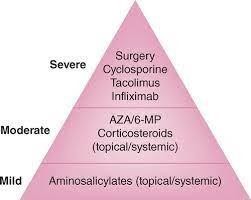A nurse is monitoring the laboratory values of a client who has rheumatoid arthritis and is taking methotrexate. Which of the following values should the nurse identify as an adverse effect of the medication?
Positive Rheumatoid factor
WBC count 2.000/mm3
Hemoglobin 14.8 g/dL
Erythrocyte sedimentation rate 24 mm/hr
The Correct Answer is B
Choice A rationale:
A positive Rheumatoid factor is associated with rheumatoid arthritis and is not an adverse effect of methotrexate.
Choice B rationale:
A low WBC count (leukopenia) is an adverse effect of methotrexate and can increase the risk of infection.
Choice C rationale:
A hemoglobin level of 14.8 g/dL is within a normal range and is not an adverse effect of methotrexate.
Choice D rationale:
An erythrocyte sedimentation rate (ESR) of 24 mm/hr is within a normal range and is not an adverse effect of methotrexate.
Nursing Test Bank
Naxlex Comprehensive Predictor Exams
Related Questions
Correct Answer is A
Explanation
Choice A rationale:
A high-fiber diet is not recommended during acute inflammation, as it may be too abrasive for the inflamed bowel. Diverticulitis is a condition in which small pouches in the colon become inflamed and infected. A high-fiber diet can help prevent constipation and reduce pressure in the colon, which can aggravate diverticulitis.
Choice B rationale:
Soapsuds enemas are not typically used for diverticulitis. They can cause irritation and discomfort.
Choice C rationale:
Bending at the waist has no effect on diverticulitis and is not a relevant instruction.
Choice D rationale:
Fluid restriction can lead to dehydration and constipation, which can exacerbate diverticulitis. A client with diverticulitis should drink plenty of fluids to stay hydrated and soften the stool.
Correct Answer is B
Explanation
Choice A rationale
Omeprazole is a proton pump inhibitor used to reduce stomach acid production and is not typically used for treating bloody stools in inflammatory bowel disease.
Choice B rationale:
Infliximab is used to treat inflammatory bowel disease and can help manage symptoms such as bloody stools by suppressing the inflammatory response.
Choice C rationale:
Ondansetron is an antiemetic used for nausea and vomiting, not related to bloody stools.
Choice D rationale:
Metoclopramide is used to treat nausea, vomiting, and gastrointestinal motility disorders, not specifically indicated for bloody stools.

Whether you are a student looking to ace your exams or a practicing nurse seeking to enhance your expertise , our nursing education contents will empower you with the confidence and competence to make a difference in the lives of patients and become a respected leader in the healthcare field.
Visit Naxlex, invest in your future and unlock endless possibilities with our unparalleled nursing education contents today
Report Wrong Answer on the Current Question
Do you disagree with the answer? If yes, what is your expected answer? Explain.
Kindly be descriptive with the issue you are facing.
